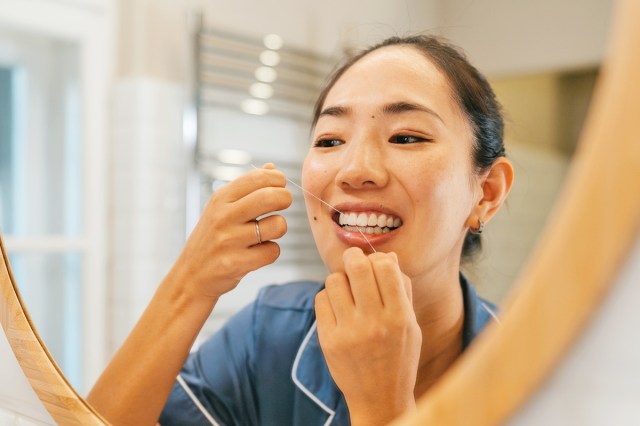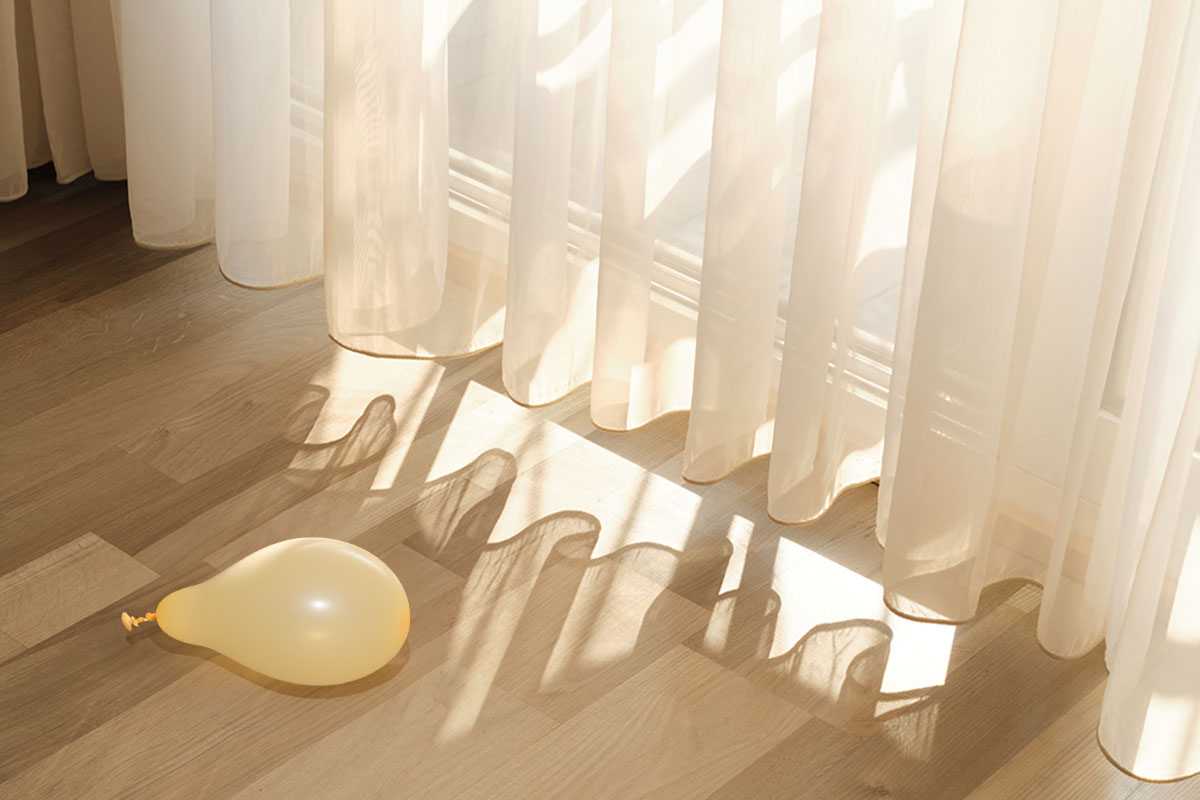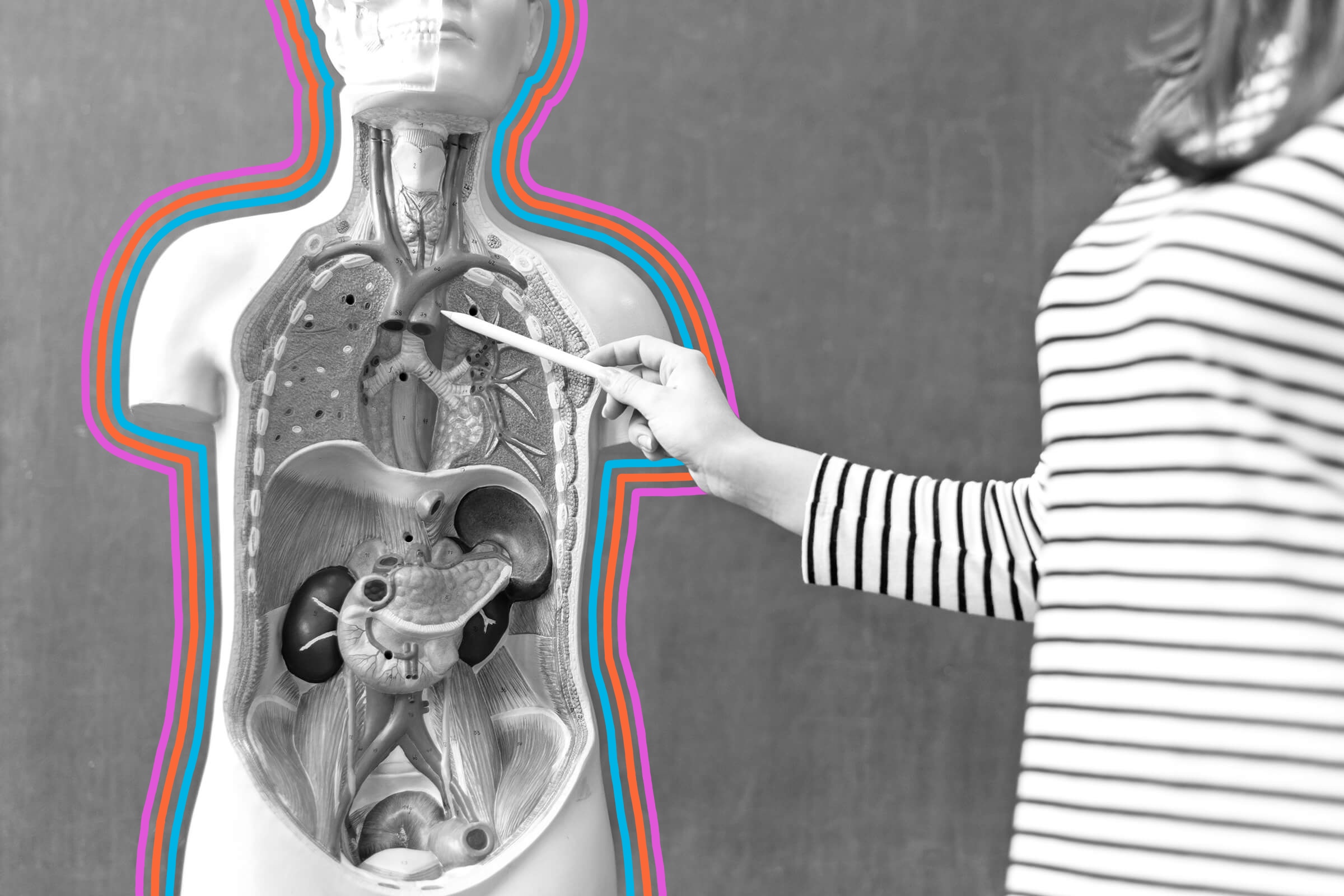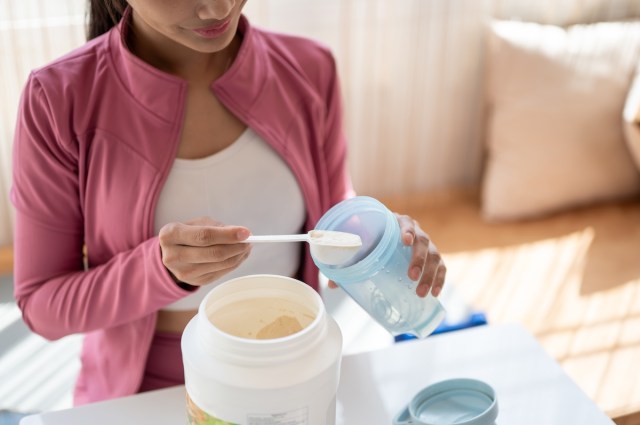All featured products and deals are selected independently and objectively by the author. Better Report may receive a share of sales via affiliate links in content.
While brushing our teeth first thing in the morning and last thing at night is a habit most of us do with ease, flossing every day is often either skipped entirely or done improperly. However, flossing is essential in order to maintain optimum oral hygiene, protect your teeth, and keep your breath fresh and clean.
“Most people only floss when food is stuck between their teeth,” says New York-based dentist Dr. Steven Davidowitz, DDS, FICOI. “[They] can then be too forceful with the floss, which can damage and irritate the gums.” He sees other frequent user errors, too, some of which you might be making, like neglecting hard-to-reach back teeth or using only one section of floss, spreading bacteria around your mouth.
It can take some time to get used to flossing, but it’s necessary to incorporate this habit into your daily routine correctly. Here is everything you need to know about flossing.
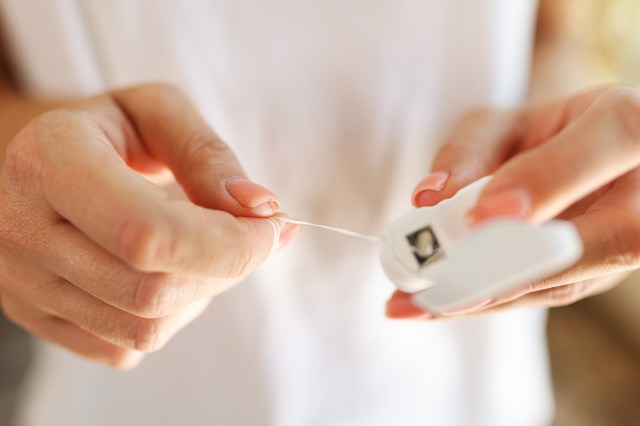
How Often Should You Floss?
In order to remove plaque and food particles from between the teeth and under the gums, the American Dental Association (ADA) recommends flossing once a day. Flossing at night is best because when you sleep, your mouth gets dry and bacteria feed off food remnants, says Dr. Davidowitz.
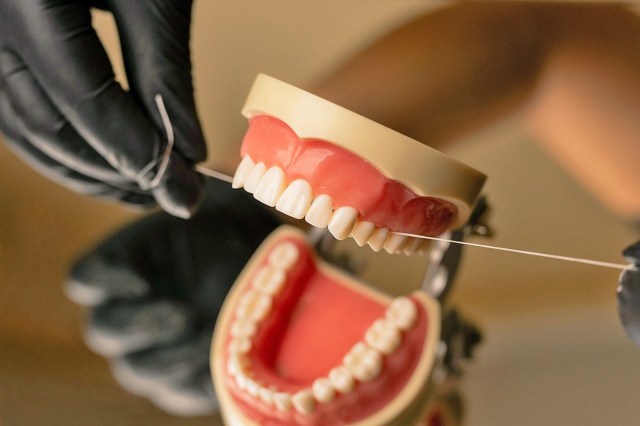
How to Floss Properly
Flossing should be done before brushing. Dr. Davidowitz suggests using about 18 to 24 inches of floss. The best method to ensure you remove any trapped food is to wrap the floss around your middle fingers, leaving about one to two inches to work with. “Gently glide the floss between teeth, hugging each tooth in a C-shape,” he says. “Move the floss up and down against the tooth surface, avoiding snapping it into the gums, but rather gently get below the collar of the gums.” He recommends always using a clean section of thread for each tooth.
Once you’ve cleaned your teeth, ideally with an electric toothbrush or soft manual brush, you can finish off your dental routine with a swirl of alcohol-free mouthwash.
Reader Favorites
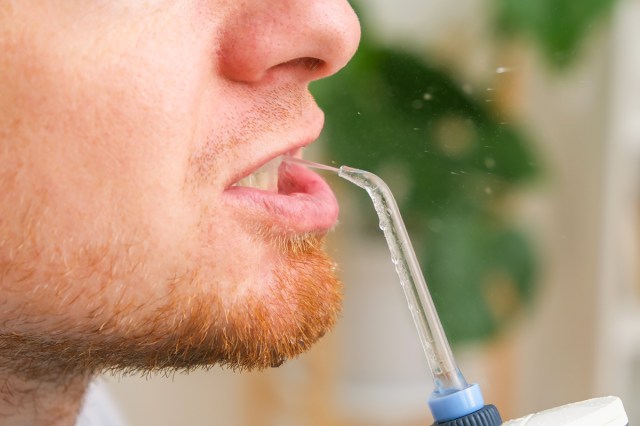
What Type of Floss Should You Use?
Not all floss is created equal. “Waxed floss is ideal for tight spaces, while unwaxed floss provides a better grip,” Dr. Davidowitz says. “Dental tape is good for wider gaps”.
Alternatively, water flossers, which work by applying a stream of high-pressure water to clean between the teeth, can be a great option, especially for those with braces. Just be sure you follow the instructions carefully or get your dentist to train you on how to use one.

The Ideal Daily Oral Care Routine
While developing a proper dental routine may be less fun than the steps of your skincare regime, it is just as important, if not more, to do every day. Who cares if your skin is glowing if your breath is stinky? In order to achieve optimum oral hygiene, brushing twice a day is an obligatory requirement. Flossing nightly removes any leftover food and ensures you avoid developing a buildup of residue between your teeth. Using mouthwash as the final step kills any bacteria and inhibits plaque growth. Getting into the habit of using a tongue scraper is also important to remove trapped germs and food debris.
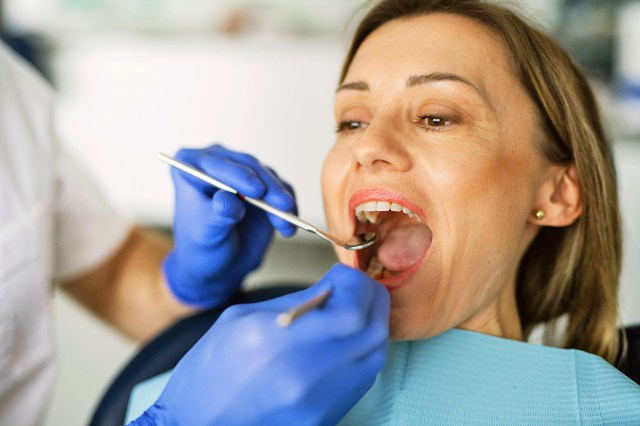
Other Steps to Keep Your Teeth Healthy
There are also measures you can take to prevent damaging your teeth when it comes to your diet. “Drink plenty of water throughout the day and limit sugary and starchy snacks,” says Dr. Davidowitz. “Also avoid acidity in your diet from food and drinks.” This means consumption of sodas, sour candies, chips, alcohol, and dried fruit should all be reduced, as it can contribute to bad breath and tooth erosion.
Once you have your daily dental needs in order, scheduling regular visits to your dentist for checkups and cleanings helps to prevent any teeth issues, such as cavities from escalating and causing irreparable damage.
Featured Image Credit: MelkiNimages/ iStock
More From Our Network
Better Report is part of Inbox Studio, which publishes content that uplifts, informs, and inspires.
